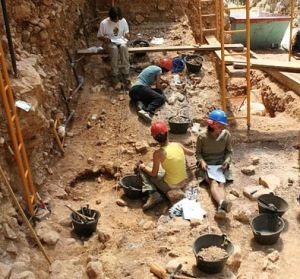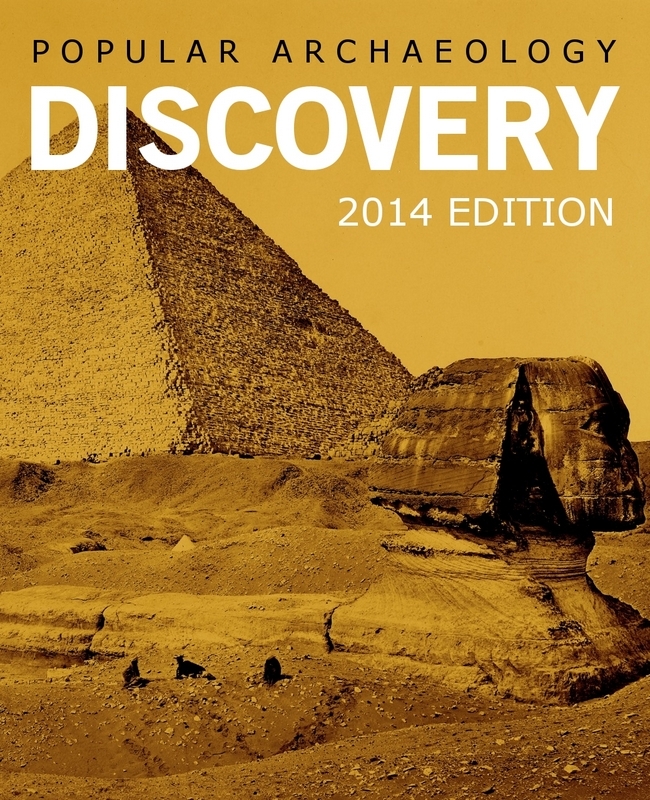
In a research paper published in the online Journal of Human Evolution, scientists are reporting the results of years of study on early human stone tool assemblages unearthed at the famous Sima del Eefante cave site in Spain.
According to the authors, the tools, along with human fossils and other fossilized faunal remains, provide a record of human habitation at the site going back to about 1.22 million years, or the Early Pleistocene period—a time long before the arrival of early modern humans in Europe around 40,000 – 45,000 years ago.
“This site has characteristics that are of great value for the study of human evolution,” write the authors in the report abstract. “The lower levels….are an essential reference for understanding the early stages of the colonization of Europe.”*
Archaeologists began full-scale excavations at the site of Sima del Elefante, one of a number of caves exposed by a railway cut, when they dug a test trench in 1997. A series of excavations followed, uncovering a wealth of faunal remains dated to the Lower and Middle Pleistocene. It was not until a 2007 dig, however, that a curious mandible with its four teeth had been unearthed. The mandible (now classified to an early human species known as Homo antecessor) was found within the context of an assemblage of “Mode 1” (also called Oldowan) lithic tools, the earliest and simplest stone tool industry known, along with faunal (animal) bone remains bearing traces of hominin modification, such as butchering marks. All of these remains were recovered from a deep stratigraphic level, ancient deposits that were dated to approximately 1.2–1.1 Mya (million years ago) in the Early Pleistocene (which spanned 2.59 to .781 Mya), based on the careful application of a combination of several methodologies: palaeomagnetism, cosmogenic nuclides testing and biostratigraphy. The validity of the dating was so airtight, in fact, that scientists consider the site of the finds as one of the most accurately dated records of human occupation in Europe.
The discoveries at the site are considered, along with finds at various other sites in Europe, a testament to the very early arrival of human ancestral groups. At the site of Dmanisi in the Republic of Georgia, for example, hominin fossils (thought to be Homo erectus) and lithic (stone tool) remains have been dated to as far back as about 1.8 million years ago; at the site of Happisburgh in Norfolk, U.K., finds, which included an unprecedented (for northern Europe) collection of hominin footprints, were found to be dated to between ca. 1 and 0.78 million years ago; and at Untermassfeld in Germany, scientists recovered and dated artifacts that could be as old as 1.07 million years.
_________________________________________
 Excavators at work at the Sima del Elefante site. Mario Modesto Mata, Wikimedia Commons
Excavators at work at the Sima del Elefante site. Mario Modesto Mata, Wikimedia Commons
_________________________________________
The researchers also report on findings related to remains dated to the Middle Pleistocene period (about 781,000 to 126,000 year ago). But they note a distinctive gap, or absence of evidence, of a hominin presence at the site between these two geologic periods. Noted the authors, “the presence of archaeologically sterile units prevents us from establishing a continuous relationship between the Early and Middle Pleistocene human settlements and, consequently, between their technological and behavioural differences.”*
The data acquired from their analysis, however, will provide a good basis for comparison between the technological and behavioral characteristics of early humans of the Early Pleistocene and those of the Middle Pleistocene, they say.
The research report has been published online at the Journal of Human Evolution.
_____________________________________________________
*Arturo de Lombera-Hermida et al., The lithic industry of Sima del Elefante (Atapuerca, Burgos, Spain) in the context of Early and Middle Pleistocene technology in Europe, Journal of Human Evolution doi:10.1016/j.jhevol.2015.03.002
_____________________________________________________
 You can read our more in-depth articles about new discoveries and developments in archaeology and anthropology with a premium subscription to Popular Archaeology Magazine. Find out what Popular Archaeology Magazine is all about.
You can read our more in-depth articles about new discoveries and developments in archaeology and anthropology with a premium subscription to Popular Archaeology Magazine. Find out what Popular Archaeology Magazine is all about.
In addition, the latest Popular Archaeology ebook is now available.
______________________________________________
Travel and learn with Far Horizons.
____________________________________________
 Popular Archaeology’s annual Discovery Edition eBook is a selection of the best stories published in Popular Archaeology Magazine in past issues, with an emphasis on some of the most significant, groundbreaking, or fascinating discoveries in the fields of archaeology and paleoanthropology and related fields. At least some of the articles have been updated or revised specifically for the Discovery edition. We can confidently say that there is no other single issue of an archaeology-related magazine, paper print or online, that contains as much major feature article content as this one. The latest issue, volume 2, has just been released. Go to the Discovery edition page for more information.
Popular Archaeology’s annual Discovery Edition eBook is a selection of the best stories published in Popular Archaeology Magazine in past issues, with an emphasis on some of the most significant, groundbreaking, or fascinating discoveries in the fields of archaeology and paleoanthropology and related fields. At least some of the articles have been updated or revised specifically for the Discovery edition. We can confidently say that there is no other single issue of an archaeology-related magazine, paper print or online, that contains as much major feature article content as this one. The latest issue, volume 2, has just been released. Go to the Discovery edition page for more information.






